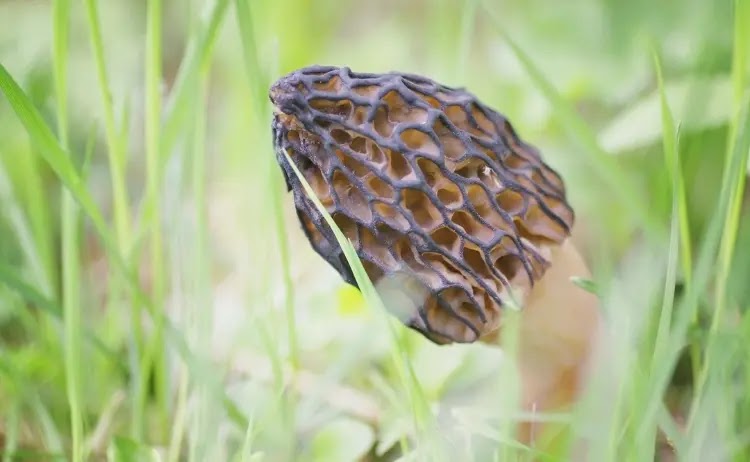Science
Top 7 Most Poisonous Mushrooms In The World
Mushrooms, a fascinating group of organisms, are known for their diverse shapes, sizes, and colors. While some are edible and even considered delicacies, others are highly toxic and can cause severe illness or even death when ingested.
The world of mushrooms is a complex one, with thousands of species each with its own unique characteristics. These poisonous mushrooms contain various toxins that can cause a range of symptoms, from mild discomfort to severe organ damage and even death.
ADVERT
Here we would like to share with you the top 7 most poisonous mushrooms in the world that you should be wary of.
7. Webcaps
The Webcaps are a group of mushrooms that belong to the Cortinarius genus. Among these, the Deadly Webcap (Cortinarius rubellus) is particularly notable for its high toxicity. The Deadly Webcap is native to high-latitude temperate to subalpine forests of Eurasia and North America.
It is generally tan to brown, with a conical to convex cap 2.5 to 8 centimeters in diameter, adnate gills, and a 5.5 to 11 cm tall stipe. They are called webcaps due to their appearance, which matches the mass of spider web strands.
The poison orellanine, which is present in this mushroom can cause liver and kidney failure if consumed.
6. False Morels
False Morels, encompassing several species including Gyromitra esculenta (the beefsteak mushroom), Gyromitra caroliniana, and others are a group of mushrooms that bear a resemblance to the highly regarded true morels of the genus Morchella. They are often mistaken for the edible delicacies.
False Morels are typically found in the spring and summer, growing directly on the ground. The caps are usually brown or reddish-brown and occasionally yellow. The mushroom contains the chemical monomethyl hydrazine (MMH), which causes vomiting, dizziness, diarrhea, and sometimes death.
Furthermore, MMH is suspected to be carcinogenic. The levels of MMH vary among different Gyromitra mushrooms and geographic regions within a single species.
5. Fly Agaric
Fly Agaric (Amanita muscaria) is a basidiomycete of the genus Amanita, known for its distinctive appearance and psychoactive properties. It is a large, usually red mushroom with white gills, white spots, and several known variations or subspecies.
The Fly Agaric is native throughout the temperate and boreal regions of the Northern Hemisphere and has been unintentionally introduced to many countries in the Southern Hemisphere.
ADVERT
Despite its iconic appearance, the Fly Agaric is poisonous. It contains the psychoactive constituents muscimol and its neurotoxic precursor ibotenic acid1. Ingestion can lead to a mix of agitation followed by sleep, intense nausea, and sometimes hallucinations.
4. Funeral Bell
Funeral Bell also known as Galerina marginata or Deadly Galerina, is a small, extremely poisonous mushroom that is part of the Hymenogastraceae family. This species is known for its deadly toxicity, containing the same lethal amatoxins found in the infamous Death Cap (Amanita phalloides).
The cap of Galerina marginata is typically yellowish-tan and sticky, with a similar color extending to the gills and a ring on the stem. It often grows in clusters on stumps and logs of both hardwood and conifer trees.
The amatoxins in Galerina marginata are responsible for over 90% of fatal mushroom poisonings in humans.
3. Death Cap Conocybe
Conocybe filaris is a common lawn mushroom that also contains the same deadly toxins as the Death Cap. The name Conocybe comes from the Greek words ‘cono’ meaning cone and ‘cybe’ meaning head.
Despite its innocent appearance, ingestion of this mushroom can lead to severe illness or even death. The cap of Conocybe filaris measures 1 to 3 centimeters in diameter. The color of the cap will vary from a lighter yellow-brown or orange-brown around the edges and a darker reddish-brown towards the center.
It is the only one of its genus to contain lethal Amatoxins.
2. Destroying Angel
Amanita virosa, commonly known as the Destroying Angel, is a deadly poisonous mushroom native to Europe. The Destroying Angel is characterized by its all-white appearance. It first appears as a white, egg-shaped object covered with a universal veil.
Amanita virosa is found in mixed oak-hardwood conifer forests, lawns, or grassy meadows near trees or shrubs. It grows solitary or scattered on soil. It is found infrequently in the lowlands but is more plentiful in mountainous areas.
ADVERT
The Destroying Angel contains a complex group of poisonous substances called amatoxins. These toxins cause severe damage to the liver and kidneys, and ingestion can be fatal. Symptoms of poisoning generally appear several hours after ingestion.
Just one cap of A. virosa is enough to kill an adult human.
1. Death Cap
Death Cap or known scientifically as Amanita phalloides is perhaps the deadliest of all mushrooms. The Death Cap is found throughout Europe and closely resembles edible straw mushrooms and Caesar’s mushrooms.
It contains heat-stable amatoxins that withstand cooking temperatures and quickly damage cells throughout the body. Ingestion of this mushroom can lead to violent abdominal pain, vomiting, bloody diarrhea, and severe damage to the liver, kidneys, and central nervous system.
It is responsible for the highest number of fatal mushroom poisonings across the globe.
Source:
















Post a Comment
0 Comments